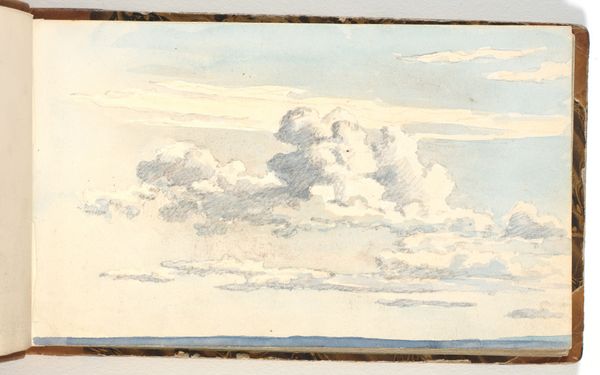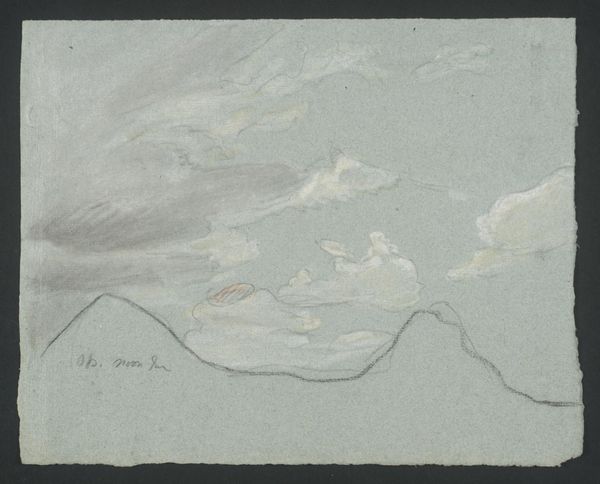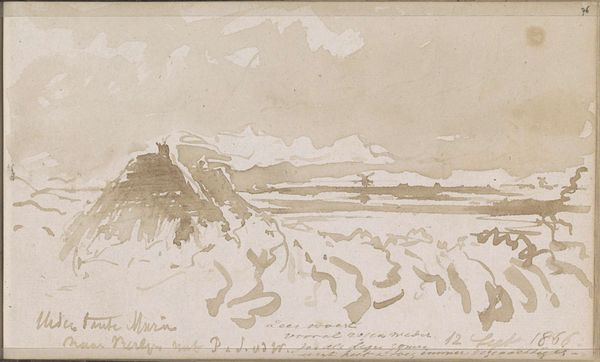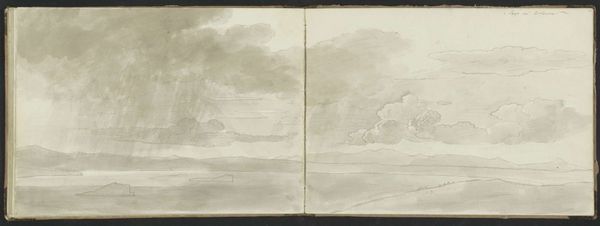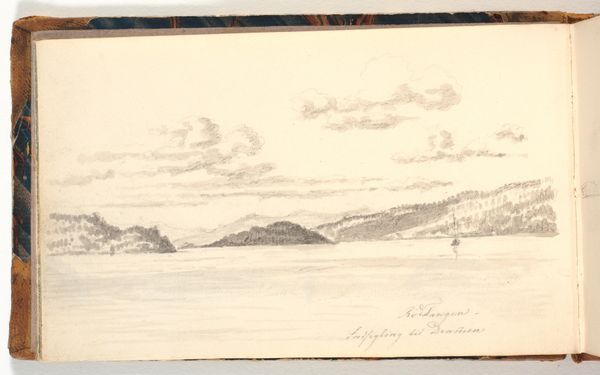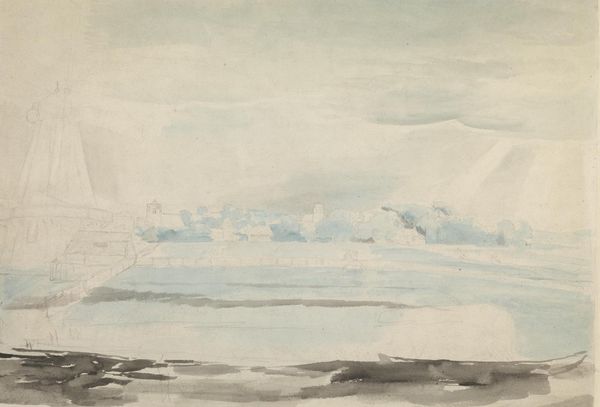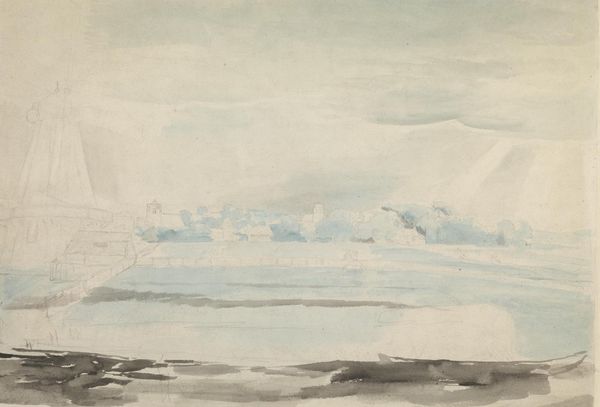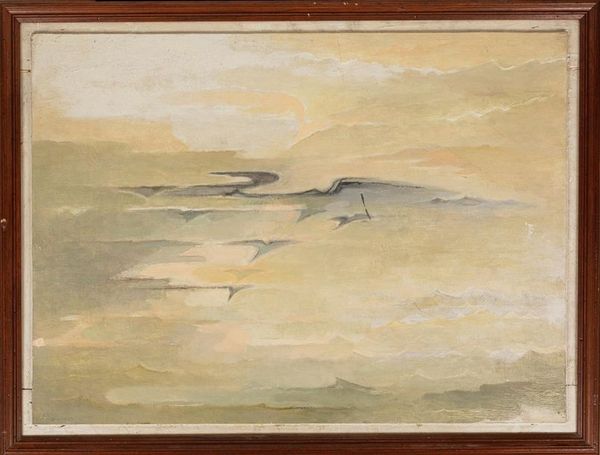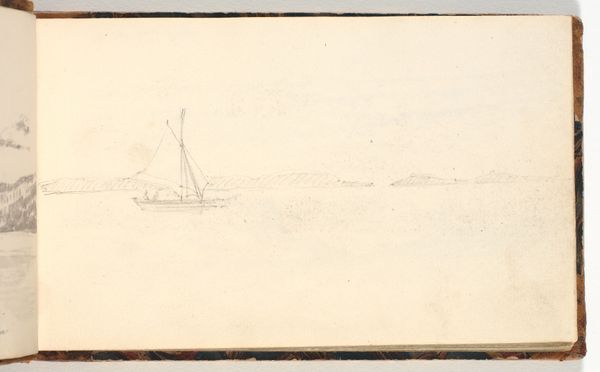
Copyright: Public domain
Curator: This watercolor by John Ruskin, created in 1858, is titled "July Thundercloud in the Val d'Aosta." Editor: It's evocative! Almost ominous. That churning sky makes me feel small. There’s a lot of tension in what could otherwise be a simple landscape. Curator: Absolutely. Ruskin was deeply interested in natural phenomena, and this piece captures a very specific meteorological moment. He uses the watercolor medium to its full potential to describe fleeting light effects. One can see the way light interacts with the clouds. We know that Ruskin advocated for close observation of nature. This artistic process really mirrors that commitment to empirical study. Editor: And the framing itself. The dark ink border so self-consciously separating art from life – yet the caption along the bottom indicating "This may be published – Ruskin quite approves." Who was he trying to reach, and why publicly display this almost scientific study? Was it part of the broader 19th-century impulse to categorize and comprehend the world, but via aesthetics? Curator: Yes, good questions! It's interesting to think about the accessibility he’s imagining and prescribing. Watercolors allowed artists to quickly capture studies en plein-air. Did Ruskin consider watercolors "lesser" than oil paint, given how easily these can travel? I think of the Romantic movement. Ruskin’s almost clinical detail feels juxtaposed with Romanticism’s emotional drama. Is he negotiating those impulses? Editor: It makes you wonder about the cultural weight and value he gave this watercolor study. Was its destiny the scientific record or public edification? He's attempting a romantic depiction that blends empirical observation with atmospheric intensity. It’s fascinating how material choice can lead us to these sorts of larger cultural interrogations. Curator: Agreed. Considering its function within the networks of display and dissemination tells a story. How does Ruskin's personal touch contribute to these institutional narratives? The means, the market, the message are all in dialogue. Editor: Indeed. Art speaks in a whisper about larger social conditions that can still provoke thoughtful conversation. Curator: Yes. Art invites us to contemplate production and meaning concurrently, with each viewing, our comprehension enriches and advances with us.
Comments
No comments
Be the first to comment and join the conversation on the ultimate creative platform.
